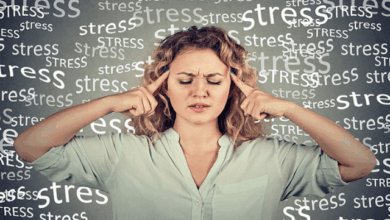Boost your mood through mindful movement today

Ever feel like your thoughts are racing, your heart is pounding, and you just can’t seem to shake off a feeling of unease? You’re not alone. Anxiety is something many of us experience, and it can feel incredibly overwhelming. But what if I told you there’s a powerful, readily available tool to help manage it – something you can do today? It’s not a pill, a pricey therapy session (though those are great options too!), but simply moving your body. It sounds simple, and honestly, it is. But the science behind why physical activity helps with anxiety is pretty amazing. This article will explore the connection between anxiety and physical activity, offering practical ways to incorporate mindful movement into your daily life and start feeling better, both mentally and physically. We’ll look at everything from quick energy boosts to longer-term strategies for managing anxious feelings.
Key Takeaways
- Physical activity releases endorphins, which have mood-boosting effects and can reduce feelings of anxiety.
- Regular exercise can help regulate your body’s stress response system, making you more resilient to anxiety triggers.
- Mindful movement, like yoga or tai chi, combines physical activity with focused breathing, enhancing its anxiety-reducing benefits.
- You don’t need intense workouts; even a 10-minute walk can make a difference.
- Finding an activity you enjoy is crucial for sticking with it and reaping the long-term benefits.
- Consistency is key – aim for at least 30 minutes of moderate-intensity exercise most days of the week.
- Physical activity can be a powerful complement to other anxiety management techniques, like therapy and medication.
The Science Behind It: Anxiety and Physical Activity
So, how does moving your body actually help calm your mind? It all comes down to biology. When you engage in physical activity, your brain releases endorphins – often called “feel-good” chemicals. These endorphins act as natural mood elevators and pain relievers. But it’s not just about endorphins. Exercise also helps regulate cortisol, the primary stress hormone. Chronic stress leads to consistently high cortisol levels, which can contribute to anxiety. Regular physical activity helps your body become more efficient at managing cortisol, reducing its overall impact.
Furthermore, exercise can improve sleep quality. Poor sleep is a major trigger for anxiety, creating a vicious cycle where anxiety makes it hard to sleep, and lack of sleep worsens anxiety. Breaking that cycle with regular movement can be incredibly beneficial. Studies have shown a strong correlation between consistent exercise and reduced symptoms of generalized anxiety disorder, panic disorder, and social anxiety.
Types of Physical Activity for Anxiety Relief
The great thing about using physical activity for anxiety relief is that there’s no one-size-fits-all approach. What works for one person might not work for another. Here are a few options to consider:
- Cardio: Running, swimming, cycling, brisk walking – anything that gets your heart rate up. Cardio is excellent for releasing endorphins and reducing stress.
- Strength Training: Lifting weights, using resistance bands, or doing bodyweight exercises. Strength training can boost self-esteem and improve overall physical health, which can indirectly reduce anxiety.
- Yoga: Combines physical postures, breathing techniques, and meditation. Yoga is particularly effective for reducing anxiety because it promotes relaxation and mindfulness.
- Tai Chi: A gentle form of exercise that involves slow, flowing movements. Tai Chi is known for its calming effects and can improve balance and coordination.
- Dancing: A fun and expressive way to get your body moving. Dancing releases endorphins and can be a great social activity, which can also help reduce anxiety.
- Walking in Nature: Combining physical activity with exposure to nature has been shown to have even greater benefits for mental health.
Mindful Movement: Connecting Body and Mind
While any physical activity can be helpful, mindful movement takes it a step further. Mindful movement involves paying attention to your body and your breath as you exercise. It’s about being present in the moment, rather than getting lost in your thoughts. Yoga and Tai Chi are prime examples, but you can practice mindful movement with any activity.
For example, when you’re walking, focus on the sensation of your feet hitting the ground, the movement of your arms, and the rhythm of your breath. If your mind wanders (and it will!), gently redirect your attention back to your body. This practice helps you cultivate a greater sense of body awareness and can interrupt the cycle of anxious thoughts. Practicing mindful walking can be a great way to start incorporating this into your routine.
Starting Small: Making Physical Activity a Habit
The biggest hurdle for many people isn’t finding an activity they like, but actually starting and sticking with it. Here are a few tips:
- Start Small: Don’t try to overhaul your entire lifestyle overnight. Begin with just 10-15 minutes of activity a day and gradually increase the duration and intensity.
- Find Something You Enjoy: If you dread your workouts, you’re less likely to stick with them. Experiment with different activities until you find something you genuinely enjoy.
- Schedule It In: Treat your workouts like important appointments and schedule them into your calendar.
- Find a Workout Buddy: Exercising with a friend can provide motivation and accountability.
- Break It Up: If you don’t have time for a long workout, break it up into smaller chunks throughout the day. Three 10-minute walks are just as beneficial as one 30-minute walk.
- Be Kind to Yourself: Don’t beat yourself up if you miss a workout. Just get back on track as soon as possible.
Exercise and Medication: A Complementary Approach
It’s important to note that physical activity is not a replacement for professional treatment for anxiety. If you’re struggling with severe anxiety, it’s essential to seek help from a qualified mental health professional. However, physical activity can be a powerful complement to other treatments, such as therapy and medication. In some cases, exercise can even reduce the need for medication, but this should always be discussed with your doctor. The National Institute of Mental Health provides resources on finding mental health support.
Dealing with Anxiety During Exercise
Sometimes, anxiety can even creep in during exercise. You might find yourself worrying about your performance, your appearance, or other things. If this happens, try these strategies:
- Focus on Your Breath: Deep, slow breathing can help calm your nervous system.
- Practice Self-Compassion: Remind yourself that it’s okay to struggle and that you’re doing your best.
- Adjust the Intensity: If you’re feeling overwhelmed, slow down or take a break.
- Listen to Music: Upbeat music can be a distraction and boost your mood.
Long-Term Benefits: Building Resilience
The benefits of regular physical activity for anxiety extend far beyond immediate mood boosts. Over time, exercise can help you build resilience to stress, improve your self-esteem, and develop a greater sense of control over your life. It’s an investment in your overall well-being that can pay dividends for years to come. Consistent physical activity can help reshape your brain’s response to stress, making you less reactive to anxiety triggers.
FAQs
Q: How quickly will I feel the effects of exercise on my anxiety?
A: Some people experience immediate relief after a workout, while others may take a few weeks to notice significant improvements. Consistency is key.
Q: What if I have a physical limitation that prevents me from doing certain types of exercise?
A: There are many different types of physical activity, so you can find something that suits your abilities. Talk to your doctor or a physical therapist about safe and effective options.
Q: Is it okay to exercise when I’m already feeling anxious?
A: Yes, but start slowly and listen to your body. If you’re feeling overwhelmed, choose a gentle activity like walking or yoga.
Q: How much exercise do I need to see benefits for anxiety?
A: Aim for at least 30 minutes of moderate-intensity exercise most days of the week. But even small amounts of activity can be helpful.
Q: Can exercise help with panic attacks?
A: While exercise isn’t a cure for panic attacks, it can help reduce their frequency and severity by regulating your body’s stress response.
I hope this article has inspired you to move your body and experience the anxiety-reducing benefits of physical activity. Remember, you don’t need to be an athlete to reap the rewards. Just find something you enjoy and make it a regular part of your life. Your mind and body will thank you for it! Feel free to share your experiences with incorporating movement into your routine in the comments below – I’d love to hear from you. And if you found this helpful, please share it with someone who might benefit!
Hi, I’m Sophia! Welcome to my blog Try Stress Management (trystressmanagement.com), where I share simple, down-to-earth ways to handle stress and bring more calm into everyday life. Think of me as your friendly guide, offering practical tips, reflections, and little reminders that we’re all figuring this out together.
When I’m not blogging, you’ll usually find me with a good book, sipping tea, or exploring new walking trails. I believe small changes can make a big difference—and that a calmer, happier life is possible for everyone.




